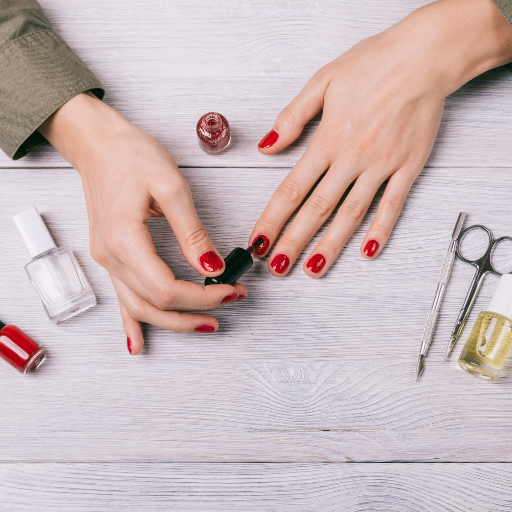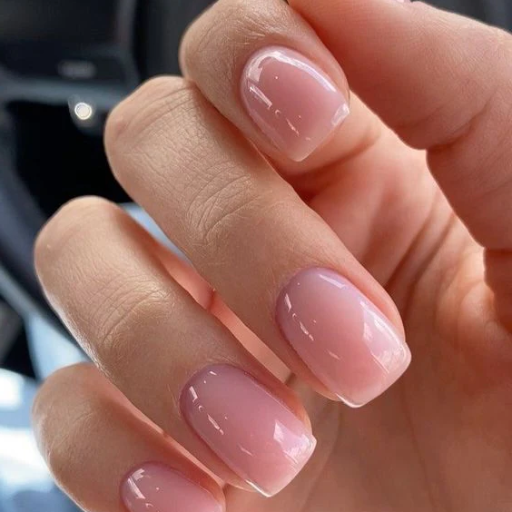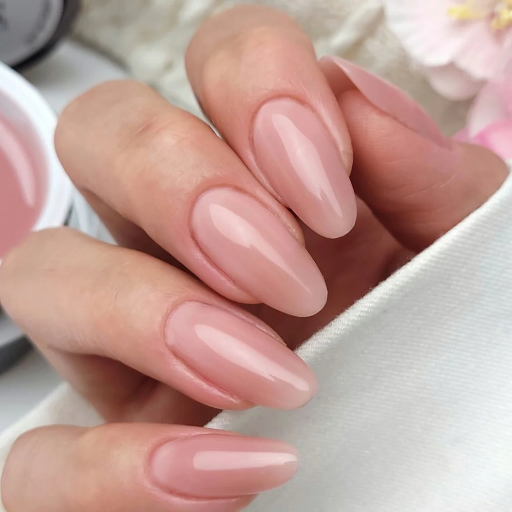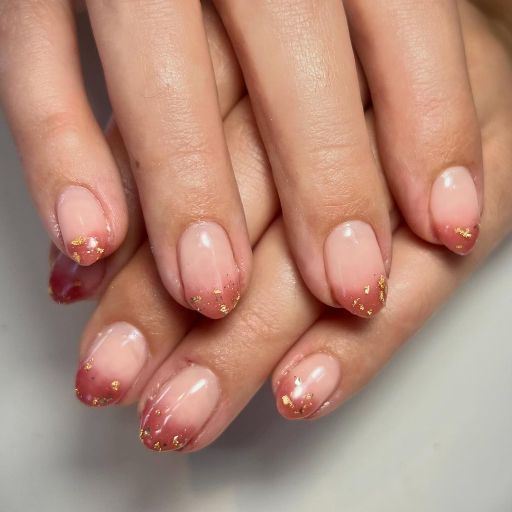Long-term exposure to the sun affects one’s skin greatly by causing hyperpigmentation, wrinkles, dryness, and even an accelerated aging appearance. Nonetheless, sun damage appears to be more than a cosmetic concern, as through the right set of approaches it can be mitigated as well as feelings of self-consciousness erased. This blog post suggests clinical and aesthetic approaches to reverse sun damage along with insights into the underlying science and the recommended procedures in skin care. Such understanding allows one to grasp the essence of the issue, ranging from how UV damage explains skin repair and protection to everyday tips for restoring your skin in the long run.
How can I protect my skin from further sun damage?
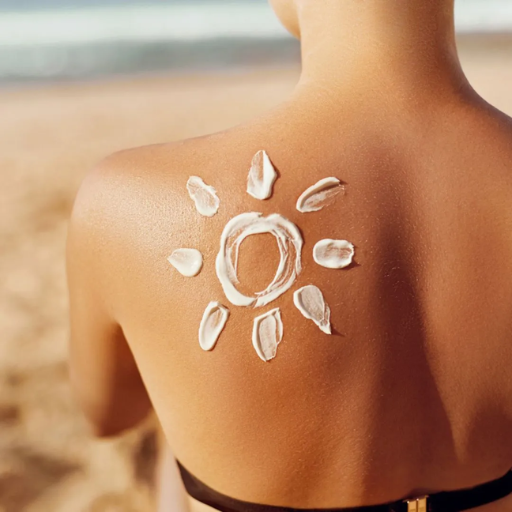
To prevent further skin damage, it is necessary to adopt a more strategic approach. First, apply sunscreen with an SPF of at least 30 daily (or more), and touch it up every couple hours, or more frequently if feasible. Dressing accordingly also helps; depending on the extent of UV exposure, you can wear clothes with longer sleeves, wide hats, and protective sunglasses. Also, it’s best to stay out of the sun between 10 a.m. and 4 p.m. as that’s when UV rays are most potent. You could also use antioxidant cosmetic products such as vitamin C or vitamin E serums to neutralize free radicals. Finally, make sure to see a dermatologist regularly to ensure the appropriate maintenance of skin health.
Choosing the Right Sunscreen for Your Skin Type
Selecting an appropriate sunscreen requires consideration of your skin type and any specific concerns. For oily or acne-prone skin, opt for non-comedogenic, oil-free formulations, such as gel-based or lightweight lotions containing ingredients like silica or isododecane. Dry skin benefits from moisturizing sunscreens incorporating hydrating agents like hyaluronic acid or ceramides. For sensitive skin, choose hypoallergenic, fragrance-free physical sunscreens with zinc oxide or titanium dioxide, which are less likely to irritate. Individuals with darker skin tones should seek clear or non-white-cast formulas to avoid an ashy residue. Additionally, broad-spectrum sunscreens with SPF 30 or higher are essential for comprehensive protection. Always conduct a patch test when trying new products to ensure compatibility with your skin.
Importance of broad-spectrum sun protection
Broad-spectrum sun protection must be used to prevent skin damage owing to UV A and UV B radiation which may have different effects but are both conjunctively damaging to the skin. Deeply seated skin damage is caused by aging of the skin caused due to ultraviolet A rays however, ultraviolet B rays cause skin burn and raised chances of developing skin cancer due to upper layer damage. Broad-spectrum sunscreens limit the exposure to both types of ultraviolet radiation and hence, minimize the effects such as photo-aging, hyperpigmentation, and even DNA damage. To stick to proper advice, dermatologists need to apply water-resistant sunscreen with at least SPF 30 every two hours or after swimming or sweating to maximize the effectiveness of the solution.
Additional ways to shield your skin from UV rays
To effectively shield my skin from UV rays, I can incorporate several strategies beyond sunscreen application. Wearing protective clothing, such as long-sleeved shirts, pants, and wide-brimmed hats, provides a physical barrier against sunlight. Opting for UV-blocking sunglasses helps protect the delicate skin around my eyes and reduces the risk of cataracts. I also prioritize seeking shade, especially during peak sunlight hours between 10 a.m. and 4 p.m., when UV radiation is strongest. Additionally, using sun-protective fabrics labeled with UPF (Ultraviolet Protection Factor) ensures enhanced coverage. Combining these measures with consistent sunscreen use offers comprehensive protection against harmful UV exposure.
What are effective treatments to reverse sun damage?
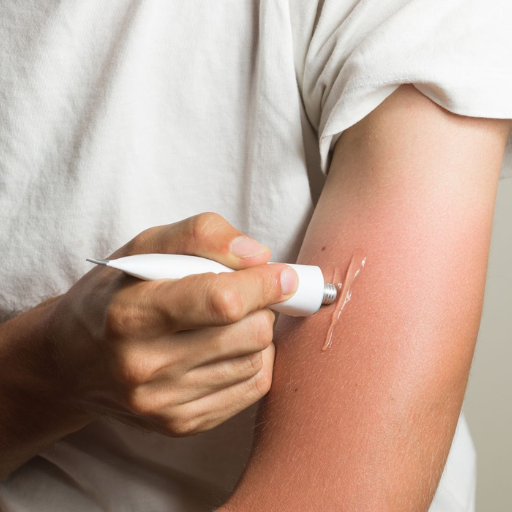
To undo sun damage, professional therapies combined with self-care skin routines are crucial. Tretinoin, for instance, is a great topical retinoid for the skin as it speeds up renewal and reduces fine lines and pigmentation that occur after exposure to UV rays. Antioxidants for example, superoxide dismutase inclusion in Vitamin C serum would neutralize free radicals and help with the repair of oxidative damage. More severe issues such as uneven skin tone or texture loss and little collagen production can be dealt with using chemical peels, dermabrasion, or laser therapy. Also, daily application of a broad-spectrum sunscreen would help prevent damage from worsening and encourage skin healing and reformation. To achieve the best, it is suggested that one consult a dermatologist for a more tailored treatment plan.
Over-the-counter creams and serums for sun-damaged skin
Creams and serums bought at the drugstore for the skin damaged by the sun contain substances that are supposed to aid in repairing damage, restoring moisture, and encouraging cell turnover. Retinol and other retinoids are widely advertised for their effectiveness in eliminating wrinkles, improving the skin surface, and aiding in cell renewal. Vitamin C serums are also popular among customers; as an antioxidant, this serum can deactivate free radicals, improve skin pigmentation, and support collagen production. Formularies based on hyaluronic acid restore the lost moisture due to the effects of UV rays as well as provide moisture. Moreover, creams including niacinamide aid in diminishing inflammation while further enhancing the natural defense mechanisms of the skin, and exfoliating agents like glycolic acid and alpha hydroxyl acids (AHAs) work to slough off the outer layer of dead skin to brighten the skin’s appearance. These products, when used in combination with protection from the sun using regular sunscreen, quicken the healing processes of the skin and help combat further signs of sun damage.
Professional treatments: Laser therapy and chemical peels
Where laser therapy and chemical peeling stand, only professional treatments can reverse the effects of sun damage while enhancing skin texture as well. With laser therapy, light of a specific wavelength is used to over-pigmentation, induce collagen synthesis, and make beneficial changes to the external surface of the skin that suffered damage. CO2 and erbium lasers are commonly used fractional lasers for more extensive resurfacing whereas non-ablative lasers focus on the removal of discoloration without significant impact to the surrounding tissue.
As for chemical peels, they are a mixture of ingredients comprising glycolic acid, salicylic acid, or trichloroacetic acid (TCA) that are used to rub off the surface layers of the skin. This accelerates the rate of cell turnover and exposes younger, softer skin fresh from beneath. Superficial peels are used for less severe skin problems like slight sunburns, whereas medium and deep peels can assist with wrinkles, dark spots, and other forms of skin textural irregularities. These procedures can be complicated and need to be repeated as per the extent of the problem; thus it is wise to only seek practitioners who are adequately trained to do so.
Role of Vitamins and Antioxidants in Skin Repair
Vitamins and antioxidants assist the skin’s self-restoration mechanisms, as well as recovery from damage caused by UV radiation, environmental stressors, and free radicals. Collagen production is increased, wounds heal better and the elasticity of the skin is improved by the application of Vitamin C which is known as one of the most potent antioxidants. Together with Vitamin C, Vitamin E cooperatively helps prevent the cellular membranes from being destroyed by free radical molecules, helps cells retain moisture, and reduces inflammation at the same time. Retinoids which are derivatives of vitamin A are known to expedite the replacement of aging cells and boost collagen production firming up the skin by eliminating fine lines and acne scars.
Coenzyme Q10 (CoQ10), niacinamide, and polyphenols are among the key antioxidants that strengthen and also shield the skin by neutralizing the effect of free radicals. Niacinamide, which is Vitamin B3, is useful in treating hyperpigmentation, reducing redness, and managing acne breakouts, in addition, polyphenols which are derived from green tea and other botanical extracts help in calming irritated skin. Regularly using products that are rich in these vitamins and antioxidants will assist the skin in self-repair, maintain structural integrity, and offer long-term protection against the aging process.
How can I improve my skin’s texture after sun damage?

To improve your skin’s texture after sun damage, focus on incorporating exfoliation, hydration, and targeted treatments into your routine. Use chemical exfoliants containing alpha-hydroxy acids (AHAs) or beta-hydroxy acids (BHAs) to gently remove dead skin cells and promote cellular turnover. Apply serums with ingredients such as retinoids, which stimulate collagen production, and antioxidants like Vitamin C to repair skin and reduce oxidative stress. Moisturize regularly with products that contain humectants like hyaluronic acid to restore hydration and reinforce the skin barrier. Lastly, always apply broad-spectrum sunscreen with at least SPF 30 to protect the skin from further UV damage.
Exfoliation Techniques to Remove Damaged Skin Cells
Exfoliation is defined as the technique used to eliminate dead and damaged cells from the top layer of the skin, this enhances the smoothness of the skin as well as the deposition of skin care products in the skin. There are two primary types of exfoliation:
Physical Exfoliation: This includes infection of mechanical means and abrasives such as microbeads containing facial scrubs, brushes, and exfoliating gloves. These tools help in facial polishing by removing dead skin cells. Nonetheless, these devices should be used with care to prevent microtears and irritation on the tender skin.
Chemical Exfoliation: This includes exfoliation using acids such as Glycolic and lactic acids – which are categorized under AHAs – and salicylic acid – which is a BHA. The SADAs are suitable for individuals dealing with dry or matured skin while the latter ones sink further into pores and assist in mitigating greasiness and pimples. Less harsh papaya and pineapple enzyme exfoliants are another option for sensitive skin.
The approach of how and when to exfoliate will differ based on an individual’s skin type. As a general rule, it is possible to exfoliate twice or thrice a week for people with normal and combination skin and once weekly for sensitive or dry skin with milder products. Further, over-exfoliating should be avoided as it can cause barrier disruption whereby dryness, erythema, or sensitivity could result or worsen, indicating that appropriate moisturizer and sunblock use is to be used to normalize the skin and shield it the lowest possible requirement for time.
Hydration Strategies for Sun-Damaged Skin
Restoring and hydrating the skin, which has been impacted by excessive sun exposure, is of utmost importance. This is because overexposure to the sun destroys the skin’s natural moisture levels and also damages the skin barrier. To rehydrate the skin, the first step should be to apply a humectant agent such as glycerin or hyaluronic acid that aids in the retention of water within the skin. Balance the use of humectants with emollients such as ceramides or fatty acids to build up the skin barrier and seal the moisture. Applying moisturizers such as Vitamin E or niacinamide enriches the skin in the fight against free radical attacks hence facilitating skin repair.
For quick effect, gels made from aloe vera or sprays with thermal water can be used. Drinking enough water, as well as missing the call of hydration, will aid in skin recovery from the inside. Use a broad-spectrum sunscreen for added protection against the sun’s harmful rays and to give room for the hydration strategies to take effect with time.
Boosting collagen production to improve skin elasticity
To reduce aging signs, it’s important to maintain forms of collagen throughout the body. As collagen forms are dependent on ascorbic acid, it is recommended to take vitamin C-enriched products or food such as citrus fruits as an addition to the diet to aid the increase of collagen levels. Furthermore, adding protein sources containing amino acid-proline and glycine, such as eggs, fish, chicken, and bone broth, to the diet is vital in providing collagen with the structural unit required for synthesis. Dermal collagen can be induced through topical applications in the form of retinoids or peptides resulting in improvement in dermal firmness with time. During clinical investigations, it was noted that skin elasticity and collagen for better hydration, takes predominately hydrolyzed collagen peptide forms. In addition to cigarette smoking, UV radiation is considered one of the major causes of skin aging as well as inhibiting the synthesis of collagen fibers thus limiting exposure to these elements is very important. Furthermore, integrating topical treatment, diet, and lifestyle changes is effective in boosting collagen levels and skin elasticity.
How long does it take to see improvements in sun-damaged skin?

The period of waiting for improvement and healing of the sun-damaged skin is influenced by three factors; the first being the nature and depth of the damage sustained and the second being the type of treatments that are used. It appears, for example, that a 6-12 week period is often enough for topical retinoids or vitamin C serums to produce a noticeable change in pigmentation as protection is gradually made better by the renewal of cells. For other procedures such as chemical peels or laser treatments, the improvement can be observed sooner but a few sessions are more often than not required for the best outcome. Some of the changes are stimulation of the production of collagen and smoothing out of fine lines, these changes integrate within months if combined with an effective routine of skincare and protection from the sun. Doubling down on a personalized regimen that works is essential for those looking out for noticeable and long-lasting changes, but patience is key as results do not come quickly.
Timeline for Visible Results from Different Treatments
According to the statistics collected, therapeutic courses for the achievement of expected results are fairly clear.
Topical Treatments (e.g. retinoids, vitamin C serums): Generally speaking, one could look forward to optimistically reduced pigmentation and smoother texture around the eye within six to twelve weeks. However, the skin cell turnover rate should be regular. In such a case better results can be anticipated.
Chemical Peels: Most sessions involve 2 or more treatment sessions and one could expect to witness results as early as a week over light chemical peels. A patient may need to wait longer for some of the deeper peels to enable the skin-repairing process and some work is done in between a chemical peel session and the subsequent one.
Laser Therapy: At times, the outcome starts within a few weeks after the first session but for best outcomes such as reduced scarring or pigmentation, multiple sessions are often suggested within a time frame of months based on the intensity of treatment intended.
In a scenario where all potential and possible constraints – varying from the patient’s commitment to aftercare instructions and combining daily use of sunscreens with the intended treatment goal and all its sessions – are addressed, the actual results can be achieved.
Factors Affecting the Skin Repair Process
The healing process of the skin is affected by many internal and external elements which can boost the recuperation process or slow it down. These factors include:
Age: As one advances in age, the ability of the skin to repair itself becomes slower because of less collagen being produced and the turnover of cells being quite slow as well this is the reason why other people heal faster than others. This is why in general, aesthetics heal quickly in the younger-than-adult population
Lifestyle and Nutrition: When one is well hydrated, has sufficient vitamins in their diet with vitamins C and E, and takes enough animal protein, skin and tissue repairs will be easy due to the high collagen intake. However, smoking, alcohol intake, and poor dieting can inhibit this cycle.
The severity of the Damage: The depth, duration, or skin loss about the thickness of the skin layer will determine how many days it would take the body to repair itself. High collagen loss at the dermis for instance is likely to significantly increase the cycle. Severe acne for example tends to be very severe and would take up a lot of time to heal.
Skincare Regimen: Compromising sunscreen and moisturizing strategies post-surgery leads to irritation of the skin and thus encourages soreness for longer periods leading to other potential skin opportunities.
Underlying Health Conditions: Some conditions such as diabetes or any immune disease could complicate wound healing through induction of vascular insufficiency, thus delaying the body’s immune response to the injury.
Maximizing skin repair involves addressing all of such factors in a systematic way that barbarizes the body in the short to long term through effective medicine and skin care.
When should I consult a dermatologist about sun-damaged skin?
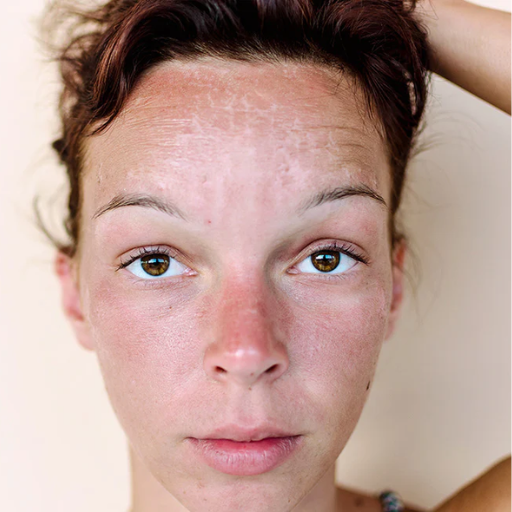
Changes in the skin, such as rough patches, alterations in color, or unusual growths, may also be precancerous or cancerous; if any of these changes are noticed, visiting a dermatologist is recommended. Also, when engaging in do-it-yourself sun-damaged skin interventions, a dermatologist’s attention is deserved when peeling, itching, or pain persists. Skincare specialists offer advanced techniques such as chemical peels, cryotherapy, and prescription-based medications to treat patients suffering from deeper or extensive degrees of sun exposure. If a person has sunburns or has once had prolonged exposure to the sun, undergoing regular check-ups should be part of their routines.
Signs that indicate professional intervention is needed
When abnormal skin changes like rough patches, dark spots, or bleeding that do not heal are noticed, it is necessary to seek professional help. These could be the attempts by the body to depict that actinic keratosis or skin cancer is developing. Multiple things can be disruptive such as peeling, or tenderness which can also be problematic and these warrant a professional evaluation. People having rapidly changing moles should also appropriately resort to medical advice. These problems can be tackled using appropriate treatments which will help increase skin health.
What to expect during a dermatologist consultation for sun damage
As with every sun damage consultation, the interview usually starts with a review of one’s medical history and general sun exposure history. Then the dermatologist will examine the patient’s skin comprehensively with a particular focus on the sun-exposed sites. They will look for any features of photoaging, like the loss of skin color, changes in texture, or even nevi. If such areas are found in ‘suspicious’ form, diagnostic tests or imaging techniques like biopsy can be recommended to eliminate the possibility of skin malignancy.
At this stage, the dermatologist may also provide or suggest the potential therapy appropriate to the patient`s situation, which may be, for example, topical agents (like retinoids for cellular restoration) or cryotherapy for AK. For aesthetic indications, for instance, to decrease pigmentation or improve skin texture, laser therapy, chemical peels or microdermabrasion may be advisable. The consultations on reconstruction usually end with direction on sun protection measures, as well as for specific broad-spectrum sunscreens and protective attire, which are necessary to mitigate further damages.
References
Frequently Asked Questions (FAQ)
Q: How can I protect my skin from further sun damage?
A: To protect your skin from further sun damage, use broad-spectrum sunscreen with an SPF of at least 30 daily, even on cloudy days. Wear protective clothing, such as wide-brimmed hats and long-sleeved shirts, and seek shade during peak sun hours. These measures will help reduce UV exposure and minimize the risk of skin cancer and premature aging.
Q: What are the most common signs of sun-damaged skin?
A: Common signs of sun-damaged skin include fine lines and wrinkles, age spots, uneven skin tone, dry skin, and rough skin texture. You may also notice increased pigmentation, freckles, and a loss of skin elasticity. In more severe cases, sun damage can lead to precancerous growths or skin cancer.
Q: Can age spots from sun damage be reversed?
A: While it’s challenging to completely reverse age spots, some treatments can help lighten and fade them. Options include topical treatments containing ingredients like hydroquinone, kojic acid, or vitamin C. Chemical peels, laser therapy, and intense pulsed light (IPL) treatments can also be effective in reducing the appearance of age spots caused by sun damage.
Q: How does skin aging relate to sun exposure?
A: Skin aging is closely related to sun exposure. UV rays from the sun can damage DNA in skin cells, break down collagen and elastin fibers, and generate free radicals. This leads to premature aging, known as photoaging, which manifests as wrinkles, sagging skin, and uneven skin tone. Protecting your skin from the sun is crucial in preventing and slowing down skin aging.
Q: What role do acid creams play in reversing sun damage?
A: Acid creams, particularly those containing alpha-hydroxy acids (AHAs) like glycolic acid, can be effective in treating sun-damaged skin. These creams work by exfoliating the top layer of skin, encouraging cell turnover, and stimulating collagen production. This process can help improve skin texture, reduce fine lines, and even out skin tone. However, it’s important to use these products as directed and always apply sunscreen, as they can make your skin more sensitive to UV rays.
Q: How can I treat dry skin caused by sun damage?
A: To treat dry skin caused by sun damage, focus on hydration and skin barrier repair. Use a gentle, fragrance-free cleanser and apply a rich moisturizer while your skin is still damp. Look for ingredients like hyaluronic acid, ceramides, and glycerin to help lock in moisture. Consider using a hydrating serum or facial oil for extra nourishment. Don’t forget to drink plenty of water and use a humidifier if you live in a dry climate.
Q: What are some effective ingredients in skin care products for reversing sun damage?
A: Several ingredients can help reverse sun-damaged skin. Retinoids (like retinol) can stimulate collagen production and cell turnover. Antioxidants such as vitamin C, E, and niacinamide can help neutralize free radicals and brighten skin. Peptides can support collagen synthesis, while alpha-hydroxy acids (AHAs) and beta-hydroxy acids (BHAs) can exfoliate and improve skin texture. Always introduce new products gradually and consult with a dermatologist for personalized advice.
Q: How long does it take to see improvements in sun-damaged skin?
A: The time it takes to see improvements in sun-damaged skin varies depending on the severity of the damage and the treatment methods used. With consistent use of appropriate skincare products and sun protection, you may start to see some improvements in skin texture and tone within 4-6 weeks. However, more significant changes, such as the reduction of fine lines and wrinkles or fading of age spots, can take several months to a year. Remember that patience and consistency are key in reversing sun damage.




